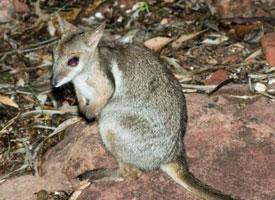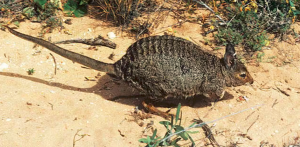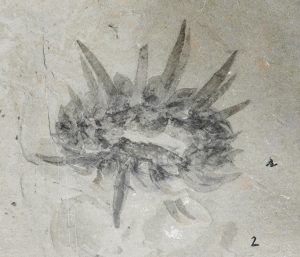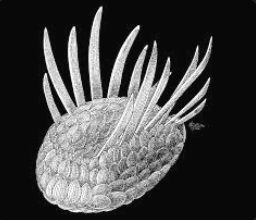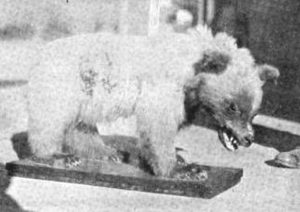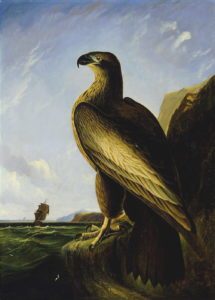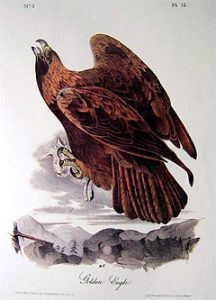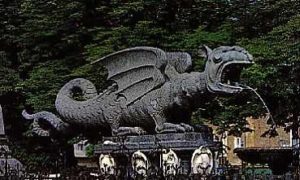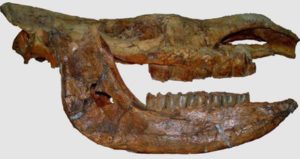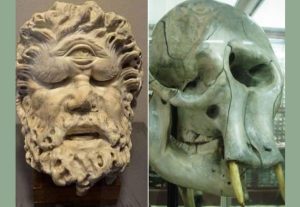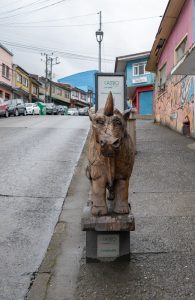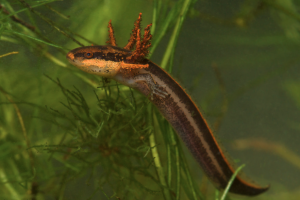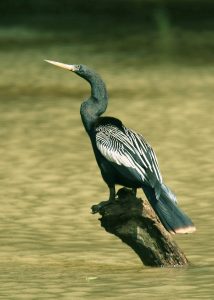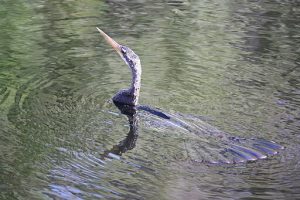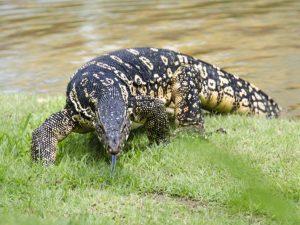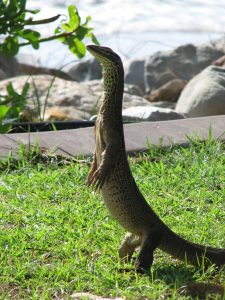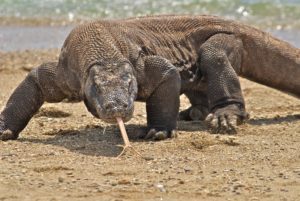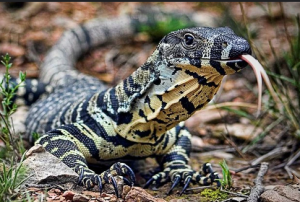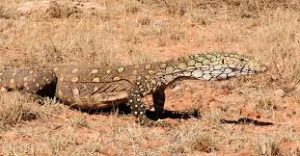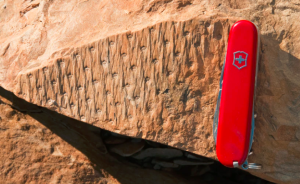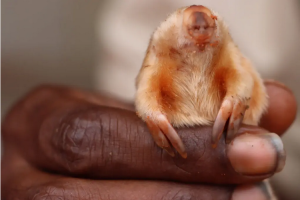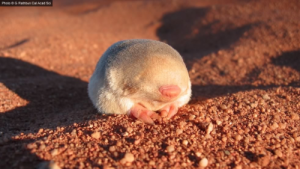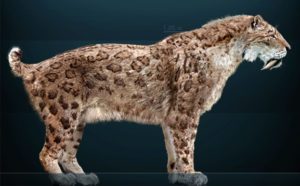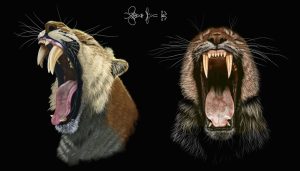Podcast: Play in new window | Download (Duration: 10:52 — 12.1MB)
Follow the enamel pin Kickstarter here!
Let’s learn about some snakes this week! Thanks to Eilee, BlueTheChickenWing, and Richard from NC for their suggestions.
Further Reading:
Snake Island’s Venomous Vipers Find a New Home in Sao Paulo
‘Rarest Snake’ in the U.S. Hatches at Tennessee Zoo
The golden lancehead [picture from first article linked above]:

The Martinique lancehead/fer-de-lance:
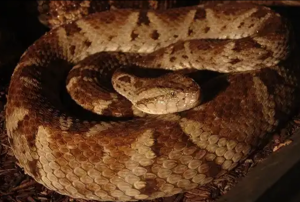
The Louisiana pine snake, and a pine cone:
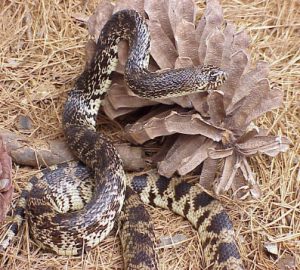
Show Transcript:
Welcome to Strange Animals Podcast. I’m your host, Kate Shaw.
After today, the next four weeks will be all about invertebrates, or animals without a backbone, because it’s almost Invertebrate August! But this week let’s learn about some animals that are basically nothing but backbones, snakes! Thanks to Eilee, BlueTheChickenWing, and Richard from NC for their suggestions!
Also, if you like enamel pins even slightly as much as I do, I’m starting a Kickstarter in a few weeks to make some more. These will be bigger than the ones I made a few years ago and will include an aye-aye. Where else are you going to get an aye-aye enamel pin? There’s a link in the show notes if you want to sign up for an email reminder when the campaign goes live in mid-August. https://www.kickstarter.com/projects/kateshaw/familiar-friends-enamel-pins
Anyway, let’s start with Snake Island, suggested by Eilee. Snake Island is off the coast of Brazil in South America, and it’s quite small, only about 106 acres total, or 43 hectares. It’s hilly and a little over half of it is covered with a temperate rainforest, while the rest is grassy or just bare rocks. No one lives there these days and it’s a protected area that only scientists are allowed to visit, with the exception of members of the Brazilian navy who occasionally stop by to maintain the lighthouse that keeps ships from smashing into the rocky coast. Lots of birds live on the island or visit there, but other than that it’s mostly just snakes.
Specifically, the critically endangered golden lancehead pit viper lives on Snake Island and nowhere else in the world. It can grow nearly four feet long, or 118 cm, and is pale gold or golden-brown in color with darker splotches. It’s also incredibly venomous—but no one has ever been bitten by one as far as we know. If somehow you were bitten by one, it probably wouldn’t be a pleasant situation but you also probably wouldn’t die. That’s mainly because the golden lancehead’s venom is adapted to kill birds and reptiles, not mammals. And that’s because there are no mammals living on Snake Island.
The golden lancehead spends most of its time in trees or bushes, hunting for birds. It mainly eats two particular species of small bird that live on the island, although it will also eat other birds, lizards, and invertebrates like insects. Some reports say it will even eat smaller golden lanceheads. There’s another snake that lives on the island, Sauvage’s snail-eater, and the golden lancehead might occasionally snack on one of those. The snail-eater is also present on mainland Brazil and isn’t venomous. You can probably guess that it mainly eats snails. It’s small and thin, lives in trees, and is brownish-yellow with darker stripes and splotches.
The issue with Snake Island and its snakes is that there isn’t that much land available for the snakes to live on, and the forest has been damaged by human activity. Big chunks of forest were cleared by fire when people decided to try growing bananas on the island, which didn’t work very well. No one lives there now, but poachers do occasionally visit the island to catch snakes for the illegal wildlife trade. The golden lancehead is starting to show signs of inbreeding and disease as a result. As if that wasn’t bad enough, because the island is so close to the coast of Brazil, and mainland Brazil has its own problems with deforestation, fewer birds are migrating through the area every year. That means fewer birds stop at Snake Island and the snakes have less to eat.
Some reports claim that the island is so overrun by snakes that you’d encounter one with every step if you visited, but that’s not actually true. The snakes don’t live everywhere, and they spend almost all their time in trees. Recent studies estimate that around 2,000 to 4,000 snakes live on the island, which sounds like a lot until you remember that these are the only golden lanceheads in the whole world! Fortunately, rumors that anyone who sets foot on the island is at risk of being bitten and dying horribly from the golden lancehead’s venom keep a lot of people away. A captive breeding program in São Paulo, Brazil is also working to help the snakes.
The golden lancehead is a type of pit viper, closely related to other pit vipers found in Brazil. Its ancestors were trapped on the island when ocean levels rose at the end of the Pleistocene, around 11,000 years ago, and it’s been evolving separately ever since. Species in the genus Bothrops are also called fer-de-lance snakes, and that brings us to our next suggestion from BlueTheChickenWing.
BlueThe ChickenWing left us a nice review a while back and made two suggestions, one of which is the fer-de-lance. Fer-de-lance is a French term meaning spearhead, or lancehead, as in golden lancehead. The golden lancehead belongs to the genus Bothrops, pit vipers that are found throughout much of Central and South America as well as some Caribbean islands. We’re only going to talk about one other species of fer-de-lance this week, though, Bothrops lanceolatus, also called the Martinique lancehead. It too lives on an island, in this case the Caribbean island of Martinique.
The Martinique lancehead can grow up to 5 feet long, or 1.5 meters, with unverified reports of individuals twice that length. It’s light brown with darker speckles and a paler belly. It lives in forested areas and spends most of its time hidden, waiting for an animal to happen by. Then it strikes! It eats pretty much anything it can catch, including frogs and rats, bats and birds, rabbits, lizards, other snakes, and even large insects. Its venom isn’t as potent as the golden lancehead’s but it’s still dangerous to humans, and unlike the golden lancehead, it can and does occasionally bite people.
The Martinique lancehead is endangered due to habitat loss and poaching. People are naturally afraid of the snake and will kill it when they can, when all it wants is to be left alone to eat animals like rats and other snakes that people don’t want around either. Hospitals in Martinique keep antivenin in stock to treat the 20 or 30 people who are bitten by a fer-de-lance every year. Most people are fine after receiving treatment, but those who can’t get to the hospital in time or who try to treat the bite at home sometimes die.
The Martinique lancehead gives birth to live young, as is the case for other fer-de-lance snakes. The eggs remain inside the mother until the babies hatch, at which point the mother delivers them and they slither away to live on their own.
Speaking of snakes having babies, let’s finish with a suggestion by Richard from NC, who sent me an article that was only published literally two days ago as this episode goes live. This is not about a snake that lives on an island, but it’s so interesting I wanted to include it. It’s about the Louisiana pine snake, which is not venomous, but which is one of the rarest snakes in North America.
The pine snake is a type of constrictor, and like other constrictors it can grow quite large. The largest individual ever reliably measured was over 5 and a half feet long, or 1.8 meters. It’s tan or yellowish in color with a darker brown pattern.
It lives in open pine forests and grasslands in parts of western Louisiana and east Texas, but even when it wasn’t so rare, hardly anyone ever saw one because it spends most of its time underground. It’s specialized to eat a little rodent called Baird’s pocket gopher, and when it’s not actually hunting the gopher, it hangs out in the gopher’s old burrows to stay cool and safe. In winter it hibernates in a gopher burrow, and there’s nothing the gopher can do about that.
Baird’s pocket gopher looks a little bit like a small guinea pig because of its large head, tiny ears and eyes, chunky body, and short legs. It has long claws that help it dig rapidly in the sandy ground it prefers. While the Louisiana pine snake mostly eats the gophers, it will also eat other small animals like frogs, rabbits, and bird eggs when it finds them. The snake is threatened by habitat loss, especially the problem of roads being built through its habitat. A lot of snakes are killed by cars while trying to cross the road. Since the snake usually only lays a few eggs a year, rarely more than five, it’s hard for populations to grow.
Fortunately, the Memphis Zoo in Tennessee is headquarters for a careful captive breeding program of the pine snake. And a few days ago, a baby snake hatched and is doing great! Hopefully more will hatch soon. The babies will be cared for until they’re big enough to be safe from most predators, and then they’ll be released into the wild. So far around 300 captive-born snakes have been released into the wild, increasing the Louisiana pine snake’s chance for long-term survival.
You can find Strange Animals Podcast at strangeanimalspodcast.blubrry.net. That’s blueberry without any E’s. If you have questions, comments, or suggestions for future episodes, email us at strangeanimalspodcast@gmail.com. We also have a Patreon at patreon.com/strangeanimalspodcast if you’d like to support us for as little as one dollar a month and get monthly bonus episodes.
Thanks for listening!
